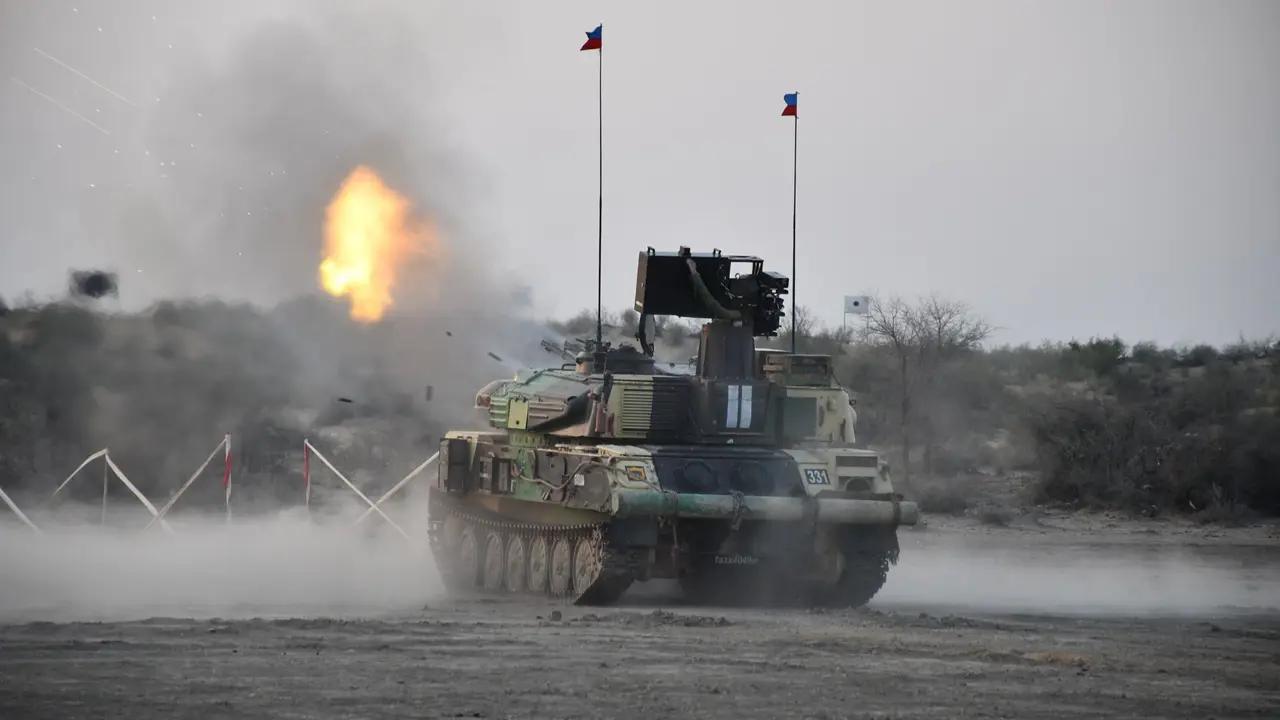Updated 29 March 2024 at 18:35 IST
Indian Army’s Airawat Gagan Rakshaks validate Shilka Anti-Aircraft Weapon to prepare for future wars
The Indian Army's Kharga Corps recently conducted an integrated firing exercise featuring the ZSU-23-4 "Shilka" anti-aircraft weapon system.
- Defence News
- 3 min read

Ambala: Troops from the Indian Army’s Kharga Corps, also known as Airawat Gagan Rakshaks recently conducted an integrated firing exercise to put to the test, the skills necessary for defence against airborne threats. During the exercise, the Indian Army employed the ZSU-23-4, better known as the ‘Shilka’ anti-aircraft weapon system to validate detection and neutralization capabilities against aerial targets including Swarm Drones in preparation for future wars.
The ZSU-23-4 "Shilka" holds a significant place in the annals of the Indian military as a highly effective Soviet self-propelled anti-aircraft weapon system (SPAAG). Its name, derived from the Shilka River in Russia, belies its formidable capabilities on the battlefield. Equipped with four 23 mm autocannons, it earned the moniker "sewing machine" from Afghan soldiers due to the rhythmic sound of its cannons firing.
Indian Army's Upgraded Version
The Indian Army utilizes an upgraded variant of the ZSU-23-4, developed in collaboration with Bharat Electronics Ltd (BEL) of India and Israel Aircraft Industries (IAI). This modernized version features cutting-edge enhancements, including an advanced 3D active phased array radar, electro-optical fire control systems, and a new Caterpillar diesel engine. Capable of operating despite enemy jamming, the upgraded systems boast an extended target detection range of over 15 km and function efficiently in extreme temperatures ranging from 55°C to minus 40°C.

The ZSU-23-4 SPAAG revolutionized air defence with its radar-guided system, offering exceptional effectiveness against enemy aircraft and helicopters in varied weather and lighting conditions. Its remarkable attributes include a high density, rate, and accuracy of fire. Notably, each autocannon can independently fire different types of projectiles from separate belts, typically OFZT incendiary fragmentation and BZT armour-piercing tracer rounds. The recommended loading ratio of three OFZT rounds to one BZT round, with every tenth BZT round equipped with a "copper remover," ensured optimal performance.
Advertisement
Enhanced Performance
With upgraded capabilities, the ZSU-23-4 can effectively engage targets flying at speeds of up to 450 miles per hour at distances of up to 2,500 meters. This enhanced performance ensures robust air defence capabilities, contributing to the safeguarding of critical assets and personnel. The purpose of the upgrade is to prolong the operational lifespan of the air defence system by 15 years, enhancing the Indian Army's readiness and defence posture.
In a testament to its commitment to modernization, the Indian Army awarded a substantial contract worth US$104 million for the upgrade of 48 ZSU-23-4 air defence systems. This investment underscores the importance of maintaining cutting-edge capabilities to effectively counter evolving threats and uphold national security interests. The ZSU-23-4 "Shilka" remains an indispensable asset in the arsenal of the Indian Army, embodying reliability, firepower
Advertisement
Published By : Yuvraj Tyagi
Published On: 29 March 2024 at 14:51 IST
